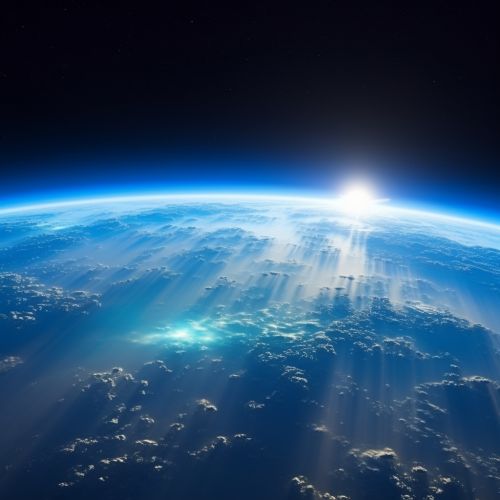Ozone Depletion
Introduction
Ozone depletion refers to the thinning and gradual loss of the amount of ozone in the Earth's stratosphere. The ozone layer is a belt of naturally occurring ozone gas that sits 9.3 to 18.6 miles (15 to 30 kilometers) above Earth and serves as a shield from the harmful ultraviolet B (UVB) radiation emitted by the sun. Ozone depletion is a major environmental problem because it increases the amount of UVB that reaches the Earth's surface, leading to harmful effects on humans and the environment.


Causes of Ozone Depletion
Ozone depletion is primarily caused by human activities. The main culprits are certain industrial processes that release ozone-depleting substances (ODS) into the atmosphere. These ODS include a variety of chemicals widely used in refrigeration, air conditioning, packaging, insulation, aerosols, and fire extinguishers. The most significant of these are chlorofluorocarbons (CFCs), halons, carbon tetrachloride, and methyl chloroform.
Chlorofluorocarbons (CFCs)
CFCs are a type of compound that was widely used during the 20th century as refrigerants, aerosol propellants, and in air conditioners. These compounds are stable, non-toxic, and non-flammable, making them ideal for these applications. However, when they are released into the atmosphere, they can have a devastating effect on the ozone layer.
Halons
Halons are a type of brominated fluorocarbon that were used in fire extinguishers due to their ability to stop the spread of fire by inhibiting the chemical reaction of combustion. However, like CFCs, halons are potent ozone-depleting substances.
Carbon Tetrachloride and Methyl Chloroform
Carbon tetrachloride and methyl chloroform are other substances that contribute to ozone depletion. Carbon tetrachloride was used in fire extinguishers and as a precursor to refrigerants, while methyl chloroform was used as an industrial solvent.
Effects of Ozone Depletion
Ozone depletion has several harmful effects on the environment and on human health. The most significant of these is the increase in the amount of harmful UVB radiation that reaches the Earth's surface.
Effects on Human Health
Increased UVB radiation can lead to harmful effects on human health. The most significant of these is an increased risk of skin cancer and cataracts. Other potential health effects include a weakened immune system, which can lead to an increased susceptibility to infectious diseases.
Effects on the Environment
Ozone depletion also has harmful effects on the environment. Increased UVB radiation can be harmful to aquatic ecosystems, particularly those in the upper layers of the ocean. It can affect the survival and development of phytoplankton, which forms the basis of aquatic food chains. This can have a knock-on effect on other species and can lead to a reduction in fish yields.
Measures to Control Ozone Depletion
In response to the threat posed by ozone depletion, the international community has taken steps to reduce the production and consumption of ODS. The most significant of these is the Montreal Protocol, an international treaty designed to protect the ozone layer by phasing out the production and consumption of numerous substances that are responsible for ozone depletion.
